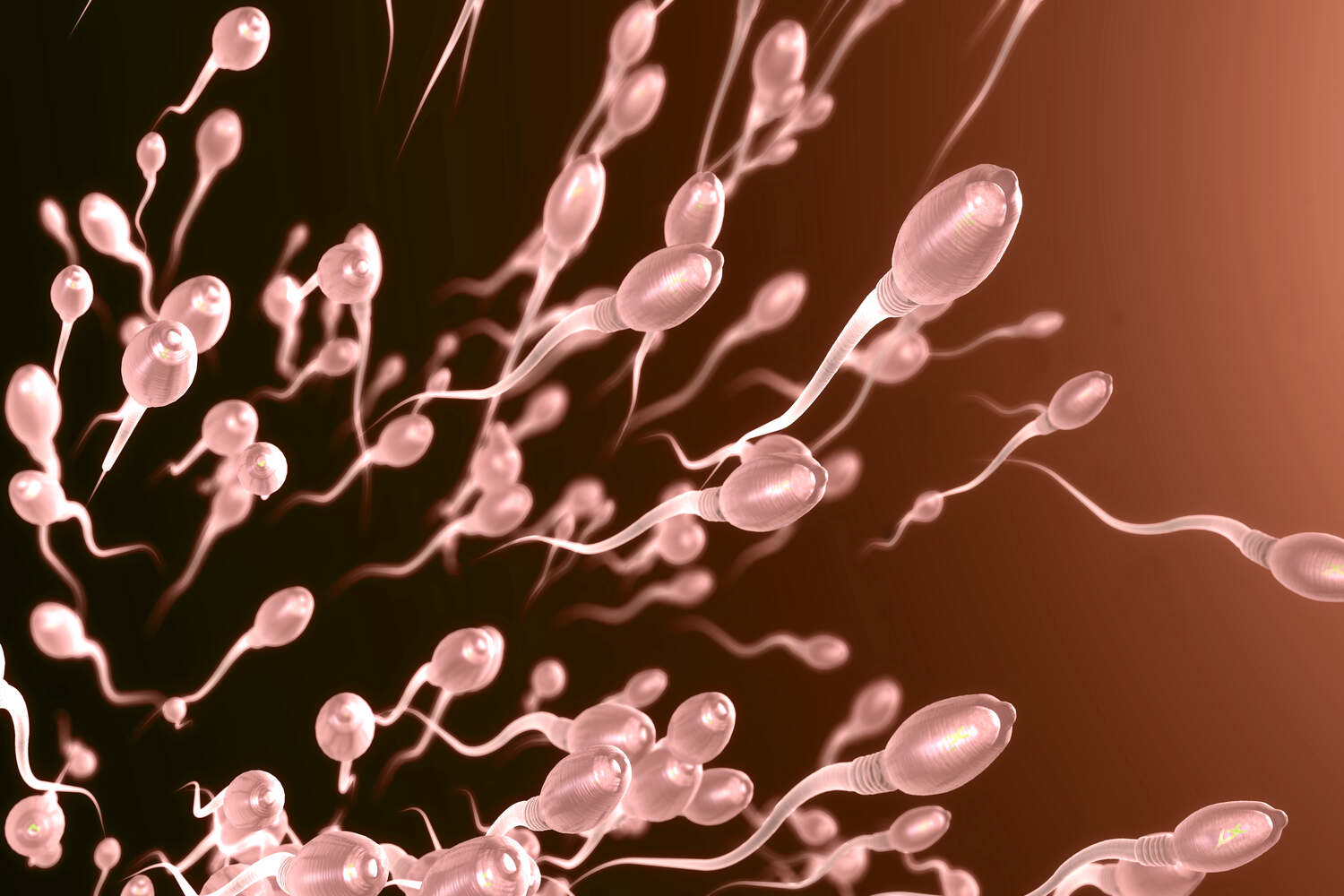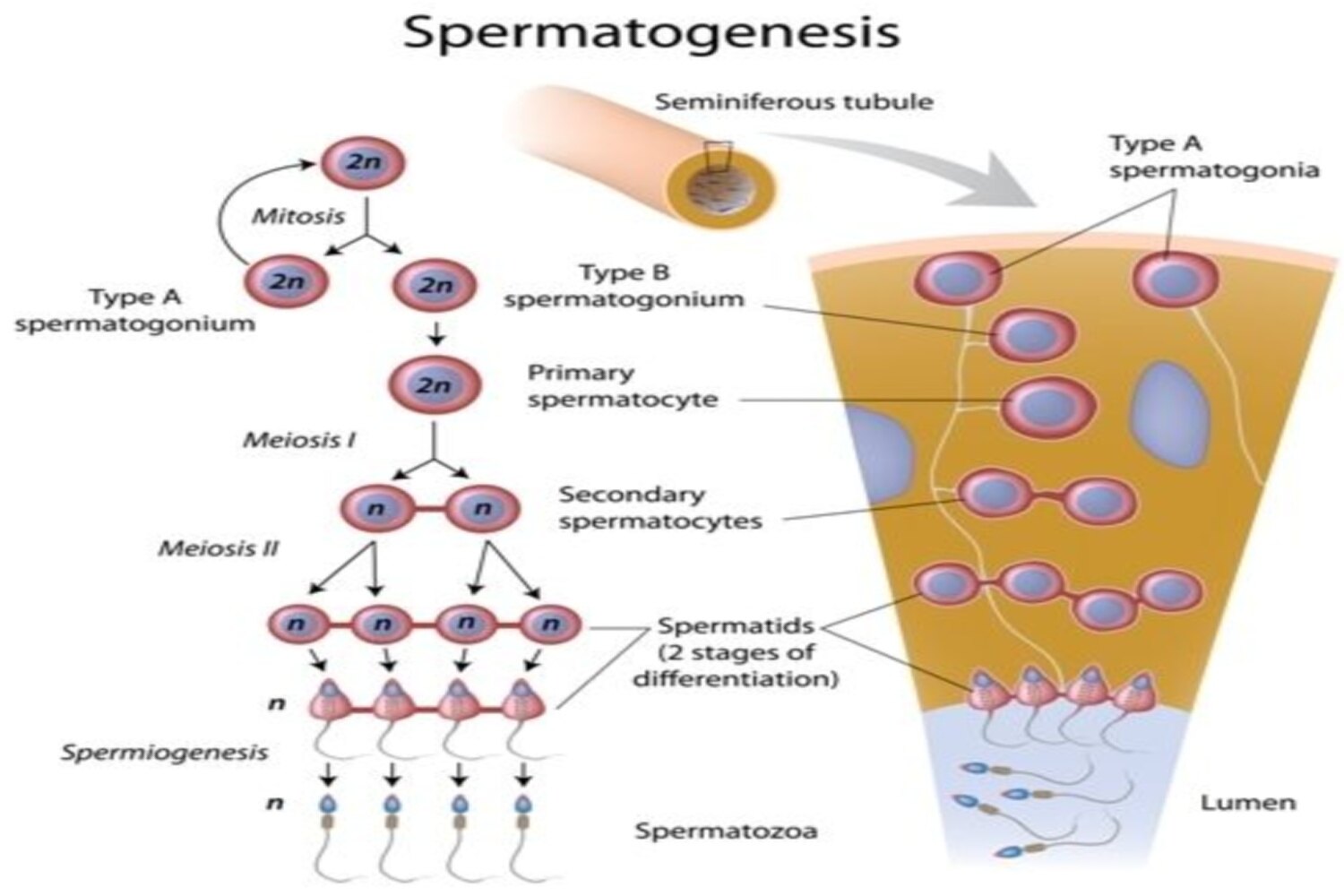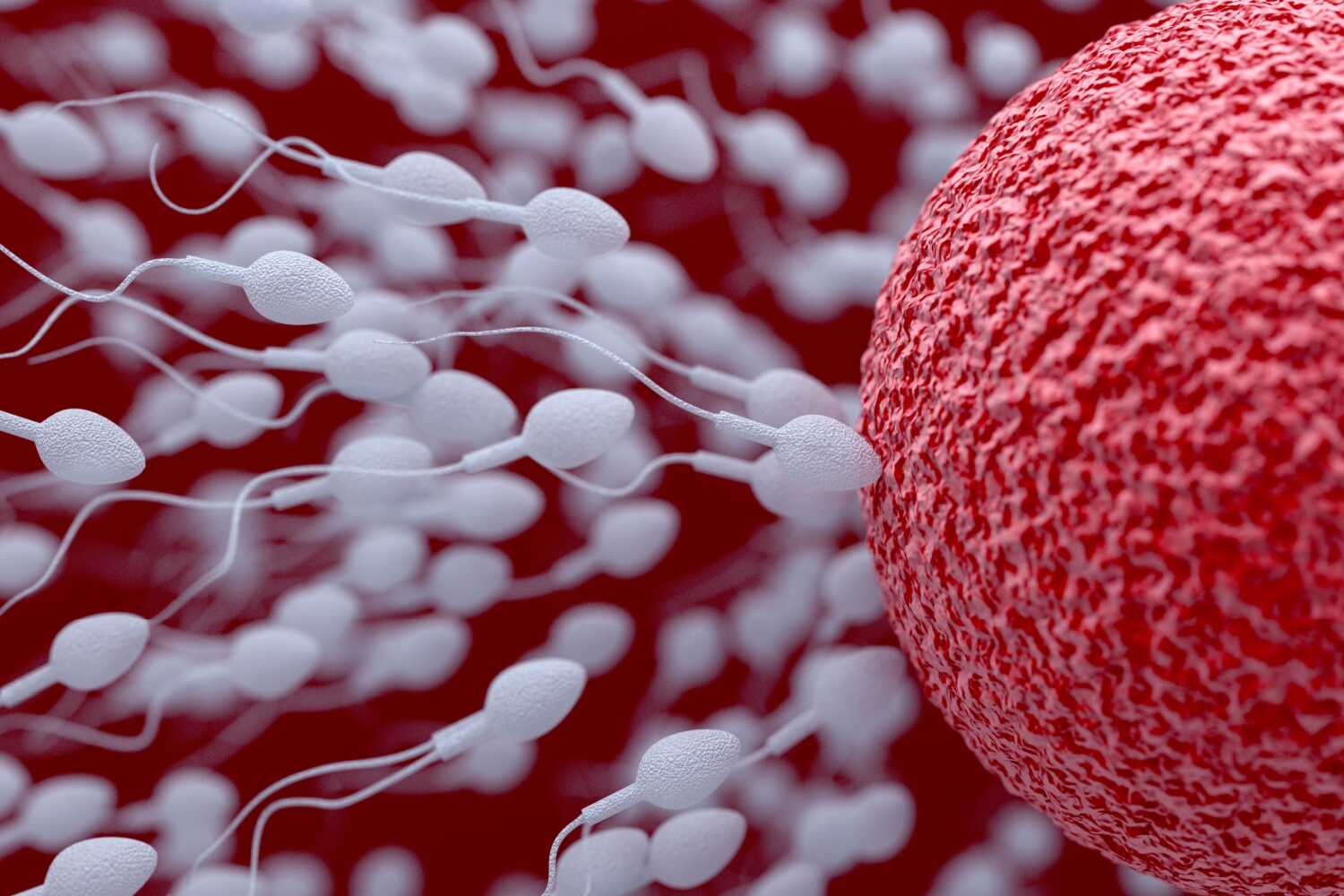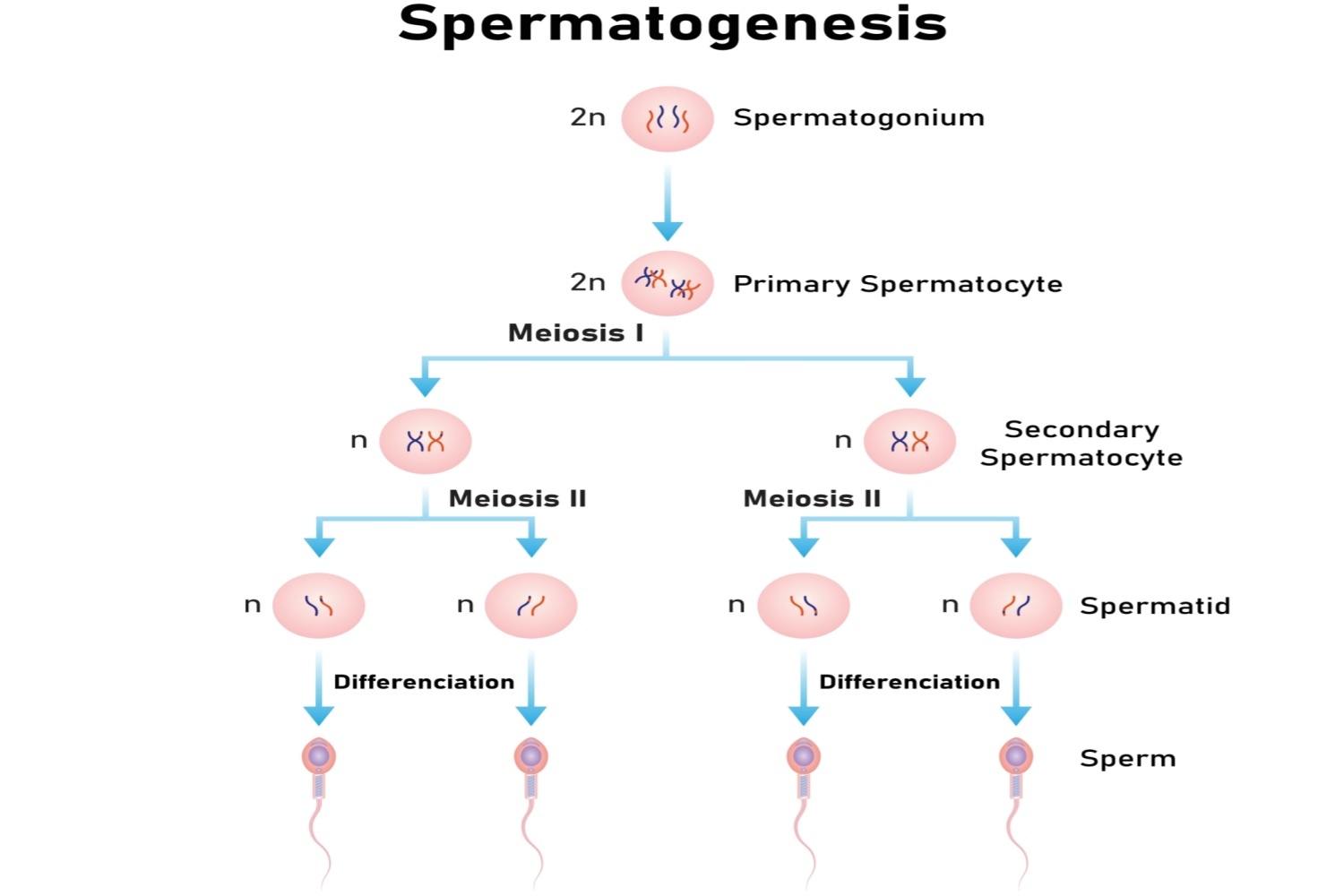
The sperm is the one half of the cells responsible for reproduction, the other half being the egg. Under the right conditions, the sperm fertilizes the egg resulting in the formation of a zygote which undergoes further divisions resulting in the formation of a baby. The journey of sperm goes through multiple stages before it gets ready to fertilize the egg.
Sperms are formed through the process of spermatogenesis which happens in the testicles of the male reproductive system. The male reproductive system produces millions of sperm each day but all it takes is a single healthy sperm cell to bring about the process of fertilization.
In This Article
- What is Spermatogenesis?
- Process of Spermatogenesis
- Factors Affecting Spermatogenesis
- Understanding Spermatogenesis
- Sperm Produced During Spermatogenesis
- Role of Sperm in Fertilization
- How Long Does Spermatogenesis Take?
- Stages of Spermatogenesis
- FAQ’s
What is Spermatogenesis?
Imagine a microscopic marathon within the male body, where millions of tiny competitors undergo a challenging transformation to become the champions – sperm cells. This incredible journey, known as spermatogenesis (1), is essential for human reproduction.
The fascinating process by which male germ cells, also known as spermatogonia, develop into mature sperm cells, or spermatozoa, is known as spermatogenesis.
Process of Spermatogenesis

The race begins within the testicles, two oval-shaped organs nestled inside the scrotum. Here, inside tiny compartments called seminiferous tubules, live the starting lineup – specialized cells called spermatogonia (2). These are like the “seedlings” that have the potential to become sperm.
Stage 1 – Replication
The spermatogonia are like energetic athletes constantly replicating. They undergo mitosis, a cell division process where each cell simply copies itself, creating two identical daughter cells. This rapid multiplication ensures a steady supply of potential candidates for the sperm cell race.
Stage 2 – Meiosis
Not all the dividing spermatogonia are created equal. Some become primary spermatocytes, the next contenders in the race. These champions face a unique hurdle – meiosis. Unlike regular cell division, meiosis involves a special type of division where the number of chromosomes (genetic material) gets halved. This is crucial because when sperm fertilizes an egg, the resulting embryo needs the correct number of chromosomes, half from each parent. Imagine meiosis as a shuffling and sorting of the genetic material.
The primary spermatocytes go through two rounds of division. In the first round, homologous chromosomes (pairs of similar chromosomes) pair up and exchange genetic information. This “shuffling” creates genetic diversity, ensuring each sperm cell’s carries a unique combination of genes.
In the second round, the paired chromosomes separate and each daughter cell (called secondary spermatocyte) receives only half the number of chromosomes.
Stage 3 – Spermiogenesis
The secondary spermatocytes undergo another division, resulting in even smaller cells called spermatids. These are like the young athletes undergoing rigorous training to become the ultimate competitors – sperm cells. Here’s where things get interesting. Spermatids undergo a dramatic transformation called spermiogenesis (3).
Their round shape morphs into the familiar tadpole-like structure of a sperm cell. A long, whip-like tail develops, essential for their swimming ability. The excess cytoplasm (cellular material) condenses, forming the head containing the crucial genetic information.
Stage 4 – Maturation And Release
The newly formed sperm cells are not quite ready for the ultimate challenge – fertilization. They need some final training and equipment. They travel to a comma-shaped structure called the epididymis, located on top of each testis. Here, they mature, acquiring motility (the ability to swim) and the capacity to fertilize an egg.
This entire journey from spermatogonia to mature sperm takes about 64 to 72 days. Throughout a man’s life, millions of sperm cells are continuously produced, ensuring a constant supply for potential fertilization.
Factors Affecting Spermatogenesis
It’s important to note that this microscopic marathon can be impacted by various factors. Certain health conditions, hormonal imbalances, and environmental factors like heat can affect sperm production and quality.
Understanding Spermatogenesis
Spermatogenesis is a complex yet vital process. By understanding the journey of sperm cells, we gain a deeper appreciation for the intricate mechanisms of human reproduction. This knowledge is crucial for maintaining good reproductive health and promoting responsible family planning.
Throughout spermatogenesis, hormones like testosterone and follicle-stimulating hormone (FSH) play crucial roles in regulating the process by influencing the cells within the testes (4). The mature sperm cells resulting from spermatogenesis are capable of fertilizing an egg during sexual reproduction, contributing half of the genetic material needed to form a new individual.
Sperm Produced During Spermatogenesis
During spermatogenesis, each spermatogonium (a diploid stem cell) undergoes a series of divisions and differentiations that lead to the production of four mature sperm cells or spermatozoa.
The process of spermatogenesis begins with spermatogonia, which are diploid cells found in the walls of the seminiferous tubules in the testes. Each spermatogonia undergoes mitosis to produce two daughter cells. One of these cells remains a spermatogonium to maintain the stem cell pool, while the other becomes a primary spermatocyte.
Subsequently, the primary spermatocyte undergoes meiosis I, resulting in the formation of two haploid secondary spermatocytes. These secondary spermatocytes then undergo meiosis II, each dividing into two haploid spermatids. This means that from each spermatogonium, four haploid spermatids are eventually produced.
Therefore, for each spermatogonium that undergoes spermatogenesis, the outcome is generation of four spermatozoa. This process is repeated continuously in the seminiferous tubules, allowing for the continuous production of sperm throughout a male’s reproductive life.
Role of Sperm in Fertilization

The primary role of sperm is to fertilize an egg during sexual reproduction. When a sperm cell successfully reaches a viable egg within the female reproductive system, it can penetrate the outer layer of the egg and fuse with it, initiating the process of fertilization.
Fertilization typically occurs in the fallopian tubes of the female reproductive tract. Once a sperm cell successfully penetrates the egg, its genetic material combines, resulting in the formation of a zygote—a single cell with a complete set of chromosomes from both the sperm and the egg.
This fusion of genetic material initiates the development of a new organism. The zygote undergoes rapid cell divisions, forming a blastocyst, which implants into the uterus and eventually develops into an embryo and, subsequently, a fetus.
The successful fertilization of an egg by a sperm is a critical step in sexual reproduction, leading to the creation of a new individual with a unique combination of genetic traits from both parents.
How Long Does Spermatogenesis Take?
From the initial division of spermatogonia (stem cells) to the formation of mature spermatozoa, the process involves several phases and typically spans around two to three months (5). After spermatogenesis, the mature sperm cells are then stored in the epididymis until they are eventually released during ejaculation (6).
Stages of Spermatogenesis

The process by which male testes produce sperm cells is known as spermatogenesis. It occurs in several stages.
1. Spermatogonial Phase
This is the initial stage where spermatogonia, the stem cells in the testes, undergo mitosis to produce more spermatogonia. Some spermatogonia remain as stem cells for future cycles while others become primary spermatocytes.
2. Meiotic Phases
- Primary spermatocyte: These cells undergo the first stage of meiosis, resulting in two secondary spermatocytes.
- Secondary spermatocyte: Each secondary spermatocyte further undergoes meiosis II to produce two round spermatids.
- Spermiogenesis: Round spermatids undergo a series of structural changes to transform into spermatozoa (sperm cells). This process involves the elongation and shaping of the cell, the development of the flagellum (tail), and the reduction of cytoplasm.
- Spermatozoa: Finally, the spermatozoa mature and are released into the lumen of the seminiferous tubules. They then move to the epididymis for further maturation and storage until ejaculation.
This entire process takes around 64 to 72 days in humans, with various regulatory mechanisms ensuring a continuous supply of sperm cells in the male reproductive system.
The journey of a sperm from start to finish is a time-consuming process involving multiple stages and processes. Many environmental and physiological factors may affect this process. The process of formation of a sperm may take anywhere between two to three months.
FAQ’s
1. What Factors Affect Sperm Production?
Sperm production can be affected by various factors such as health conditions, lifestyle, environmental conditions such as heat, and hormonal imbalances.
2. How Long Does it Take For a Human Body to Produce a Sperm?
The process of sperm production, from start to finish may take anywhere between 2 to 3 months.
3. Where Are The Mature Sperm Stored?
The mature sperm are stored in the epididymis, a comma-shaped structure located on the top of each of the testes. The mature sperm are stored here till the process of ejaculation.
References
- Spermatogenesis – Developmental Biology – [https://www.ncbi.nlm.nih.gov/books/NBK10095/]
- Spermatogonial stem cells – [https://www.ncbi.nlm.nih.gov/pmc/articles/PMC6692861/]
- Mechanisms of spermiogenesis and spermiation and how they are disturbed – PMC – [https://www.ncbi.nlm.nih.gov/pmc/articles/PMC4581055/]
- Hormonal regulation of spermatogenesis and spermiogenesis – [https://pubmed.ncbi.nlm.nih.gov/18400489/]
- Spermatogenesis: The Commitment to Meiosis – PMC – [https://www.ncbi.nlm.nih.gov/pmc/articles/PMC4698398/]
- The Role of the Epididymis and the Contribution of Epididymosomes to Mammalian Reproduction – PMC – [https://www.ncbi.nlm.nih.gov/pmc/articles/PMC7432785/]
